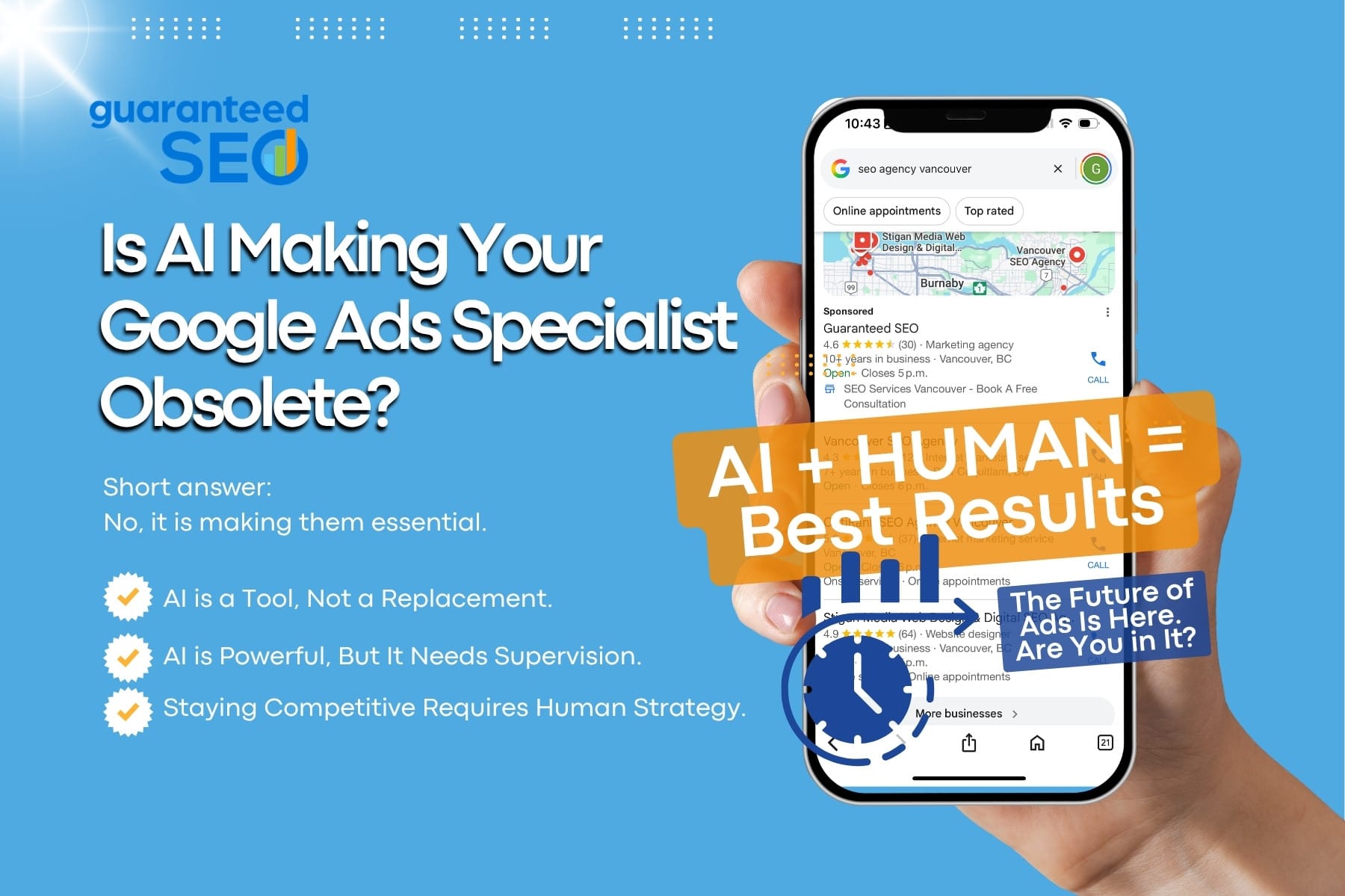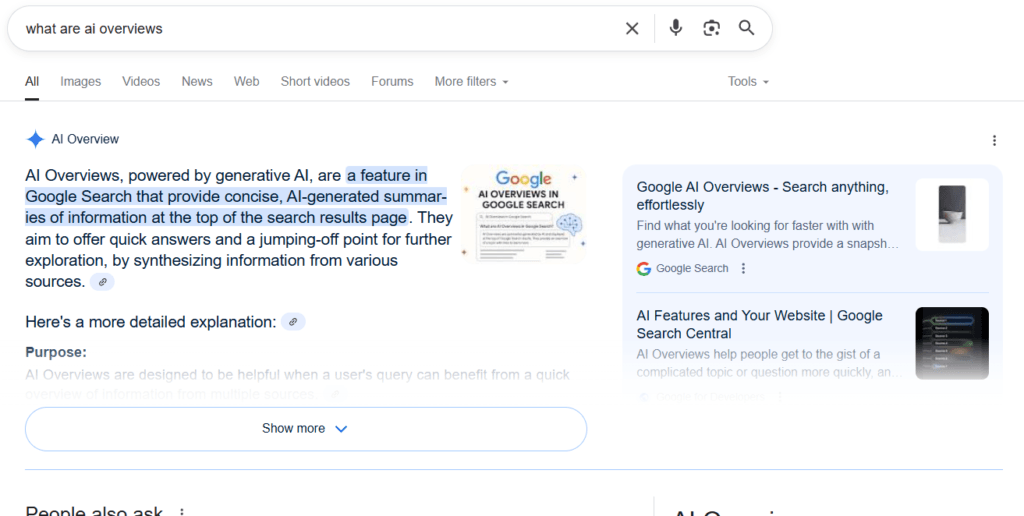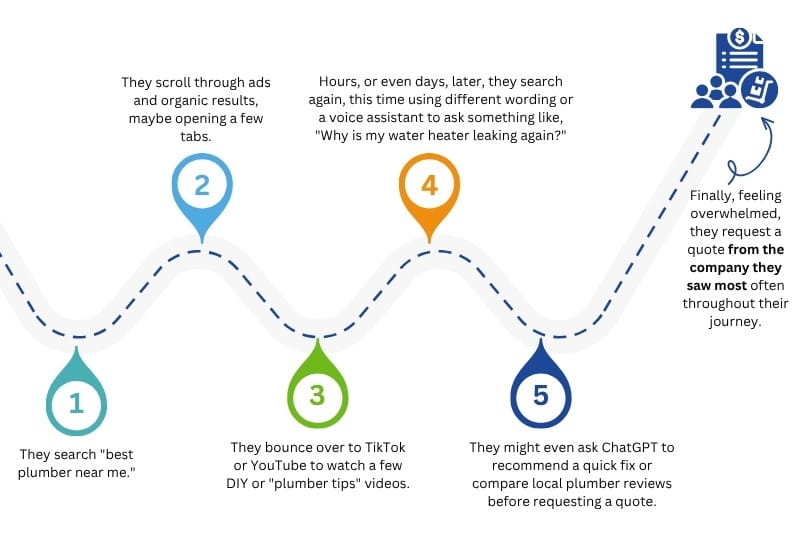If you’re a small business owner, you’ve probably felt it. The ground is shifting. The buzz around AI isn’t just noise anymore, particularly with online paid advertising; it’s fundamentally changing how customers find you and, I dare to say, even how you do business.
You might have noticed your own Google search results transform, with AI-generated summaries appearing at the very top. If you are managing your own campaigns, you may have even noticed your cost-per-click creeping up or your impressions dropping, despite your campaigns staying the same. What used to work is no longer bringing you the results you want.

As hard as it may be for some PPC specialists to accept, Google Ads isn’t what it used to be. That’s not a bad thing. If it were the same as it was 10 years ago, Google would be obsolete in today’s age. The game of paid advertising is still the same at its core, but the rules have adjusted to user demand and have become far more complex.
The purchasing journey is not what it once was.
People are no longer relying solely on Google to find answers to their concerns, buy a product, or hire a service. What was once a simple directory where people would search for exactly what they wanted is not so straightforward now. People are warier, there is more competition, and in this economy, people want to invest their money in the right product or provider.
One of the biggest shakeups in 2025 is AI Overviews. Have you Googled something recently and seen a big, AI-generated summary at the top of the page? That’s an AI Overview.

While helpful for getting a quick answer, here’s the problem for advertisers:
This makes ad creative and targeting more important than ever. Your ad needs to be hyper-relevant and visually engaging just to get noticed.
*Note: Ads can appear inside AI Overviews. As of July 2025, this is primarily available in the United States, but it’s expected to roll out to other countries sooner rather than later. (Google, 2025)
Remember when customers searched in simple terms? “Plumber Vancouver.” “Best coffee shop.”
Those days are fading. Users now treat search engines like personal assistants.
Their queries are more conversational and specific:

In the past, a user might search “best plumber near me,” click the first ad or listing, and make a call. This can still be true in an emergency, but for a renovation project or for more price-conscious people, the journey might look more like this:

You need to be visible in more than one place. It’s no longer just about the first click; it’s about being present everywhere your customer might turn: ads, reviews, map listings, remarketing, and even TikTok or AI-generated summaries.
To handle this new reality, Google has gone all-in on AI-driven campaigns. You’ve likely heard of Performance Max (PMax), an automated campaign that runs your ads across all of Google’s channels (Search, YouTube, Gmail, Discover, Maps) from a single setup.
But now in 2025, we’re seeing the next evolution in closed beta programs: what Google is calling “AI Max.”
Think of “AI Max” as a power-up for your search campaigns. It’s not a new campaign type, but rather an additional tool intended to elevate your existing campaigns.
Here’s how it works:
It can be, but only if you provide the right guardrails and keep a close eye on it. Don’t let Google consume your budget for its own sake. At the end of the day, you, the business owner, know what type of client you are looking for.
This is where a dedicated PPC specialist becomes invaluable. The AI is the engine, but you still need a skilled pilot.
As PPC specialists, our job is to be the pilot in the cockpit. The AI can fly the plane with incredible efficiency (the autopilot), but we set the destination, monitor the instruments, and most importantly, have our hands on the brakes.
The rise of AI in Google Ads isn’t a signal to pull back and let the machines take over. It’s a call to arm yourself with an expert who knows how to wield these powerful new tools. Your competitors are either figuring this out or falling behind.
Navigating this new digital landscape alone is not just difficult; it’s a risk to your bottom line.
Bing isn’t sitting idle. Thanks to Microsoft’s partnership with OpenAI, Bing Ads has doubled down on AI-driven search.
Bing’s market share might still be small compared to Google’s, but it’s growing, especially in business and desktop search. Plus, cost-per-click (CPC) on Bing is often 20–40% cheaper, which makes it a smart place for small businesses to diversify.
If you are looking for extra exposure and have the budget, our team can also help you set up your Bing campaigns. Google is no longer the only powerhouse. Gain a competitive advantage by starting now before everyone else does.